The Saluki Dog: An Ancient and Noble Breed

The Saluki, often referred to as the “Royal Dog of Egypt“, is one of the oldest known dog breeds in the world. Revered for its graceful appearance, incredible speed, and noble temperament, the Saluki has a history that stretches back thousands of years. This sighthound is a living symbol of beauty and endurance, blending ancient heritage with a modern companion’s loyalty.
Breed Overview
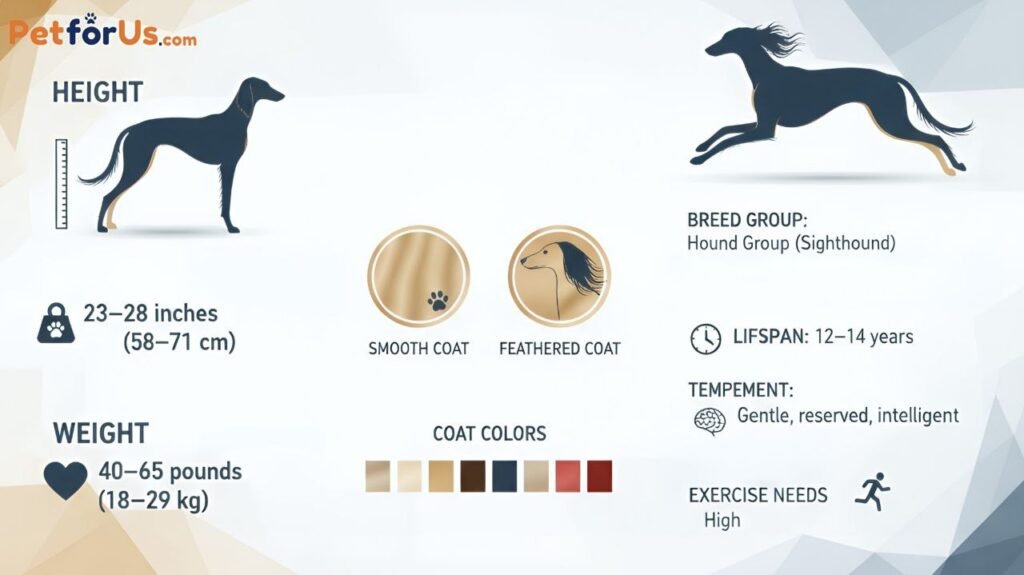
| Feature | Details |
|---|---|
| Breed Group | Hound Group (Sighthound) |
| Origin | Middle East (Ancient Egypt, Persia) |
| Height | 23–28 inches (58–71 cm) |
| Weight | 40–65 pounds (18–29 kg) |
| Lifespan | 12–14 years |
| Coat Type | Smooth or feathered |
| Temperament | Gentle, reserved, intelligent |
| Exercise Needs | High |
History and Origins
The Dog is among the oldest domesticated dog breeds, with depictions found in ancient Egyptian tombs dating as far back as 2100 BCE. They were considered sacred animals by the Egyptians and were often mummified alongside their owners. The breed’s name is believed to derive from the ancient city of Saluq in Yemen, although exact origins remain debated.
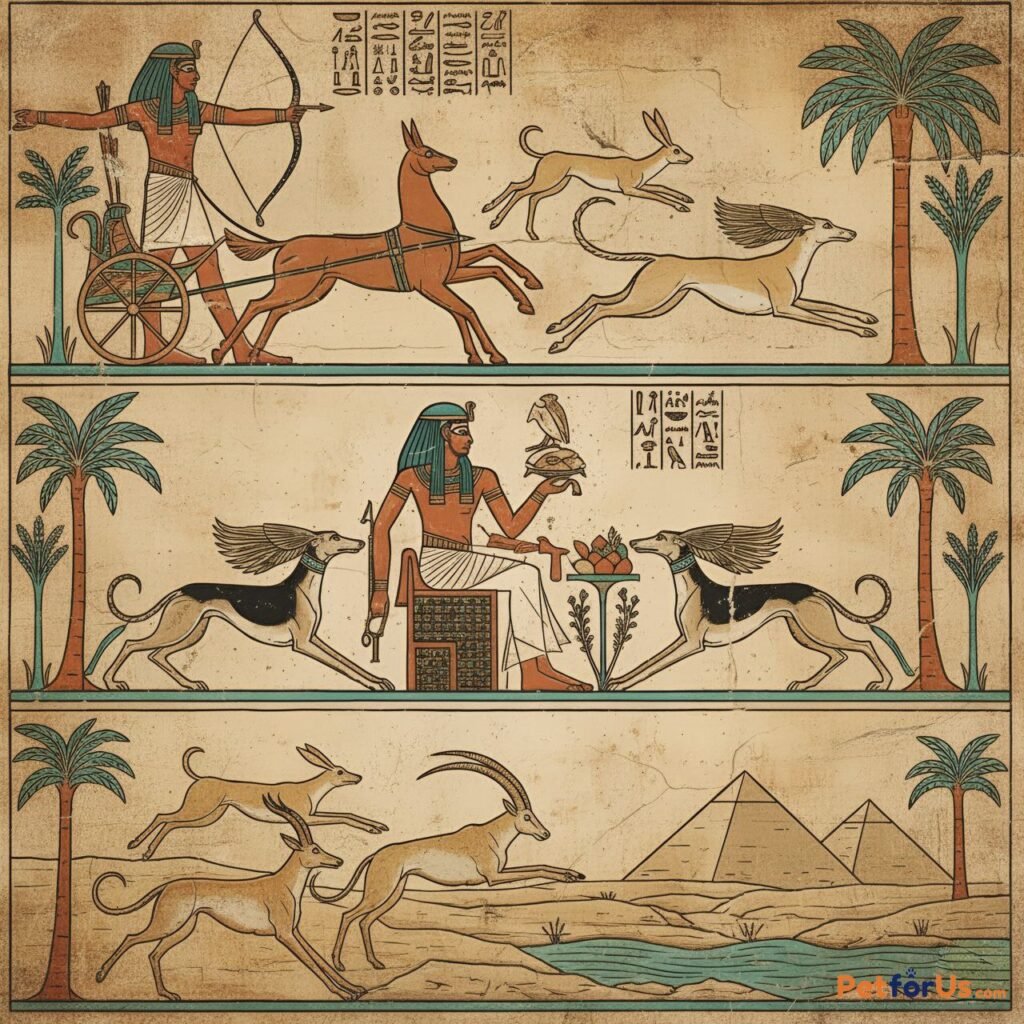
Historically, Salukis were hunting companions to nomadic tribes across the Middle East and Asia. They were bred for speed, agility, and endurance to chase and capture game such as gazelle, hare, and fox in open desert terrain.
Salukis were so revered by Bedouins that they were allowed to sleep inside the tents, a privilege not often extended to other dogs in traditional Muslim culture.
Appearance
Salukis are the epitome of elegance in the canine world:
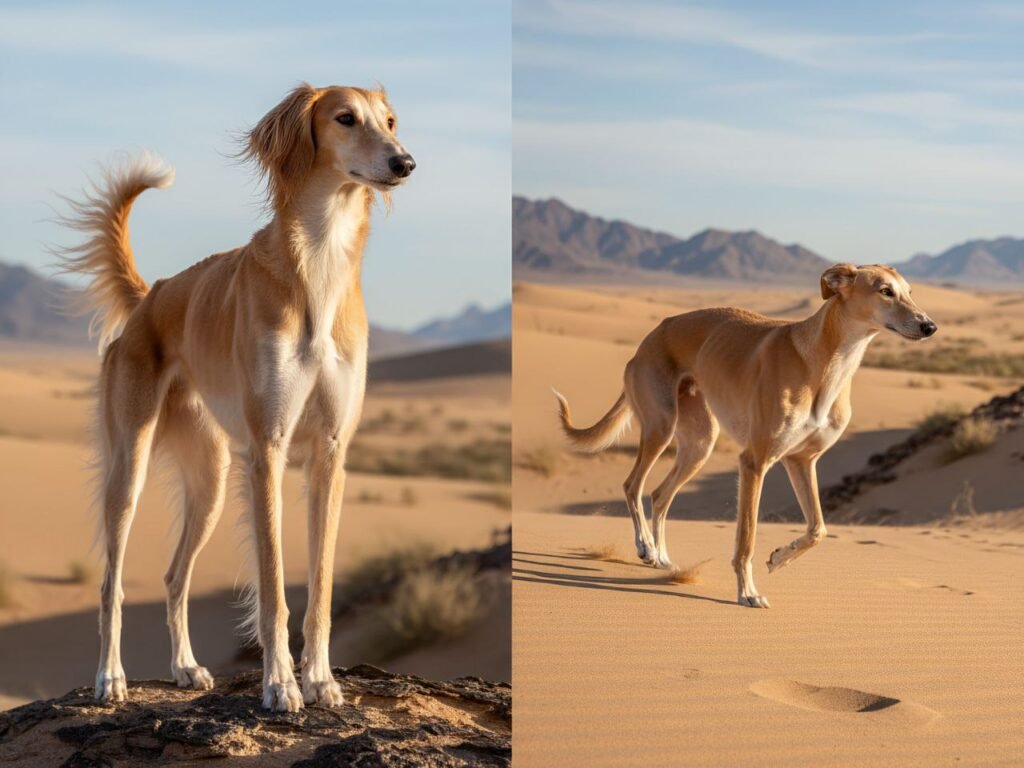
- Body: Slender, yet muscular and built for speed.
- Head: Long and narrow with a refined muzzle.
- Eyes: Large, oval-shaped, and usually dark with an intelligent, far-seeing gaze.
- Ears: Long and drooping, covered with silky hair in feathered varieties.
- Tail: Long and curved, often feathered in coated types.
- Coat: Comes in two main types:
- Feathered: With longer hair on the ears, tail, and sometimes legs.
- Smooth: With short, close-lying hair.
- Colors: Cream, fawn, black and tan, grizzle and tan, golden, red, white, and tricolor (white, black, and tan).
Also Read: Inside The Secret World Of African Wild Dogs And Their Incredible Teamwork
Temperament and Personality
Salukis are known for their dignified and independent personality:

- Reserved: Not usually overtly affectionate with strangers but deeply loyal to their families.
- Quiet: Rarely bark unless there’s a reason.
- Sensitive: Salukis don’t respond well to harsh training. Gentle, positive reinforcement is essential.
- Intelligent: They are quick learners but may not always be eager to please.
- Prey-driven: Their hunting instinct remains strong, so care should be taken when around small animals.
They thrive best in calm, respectful households and may be shy or aloof in noisy or chaotic environments.
Exercise and Activity Needs
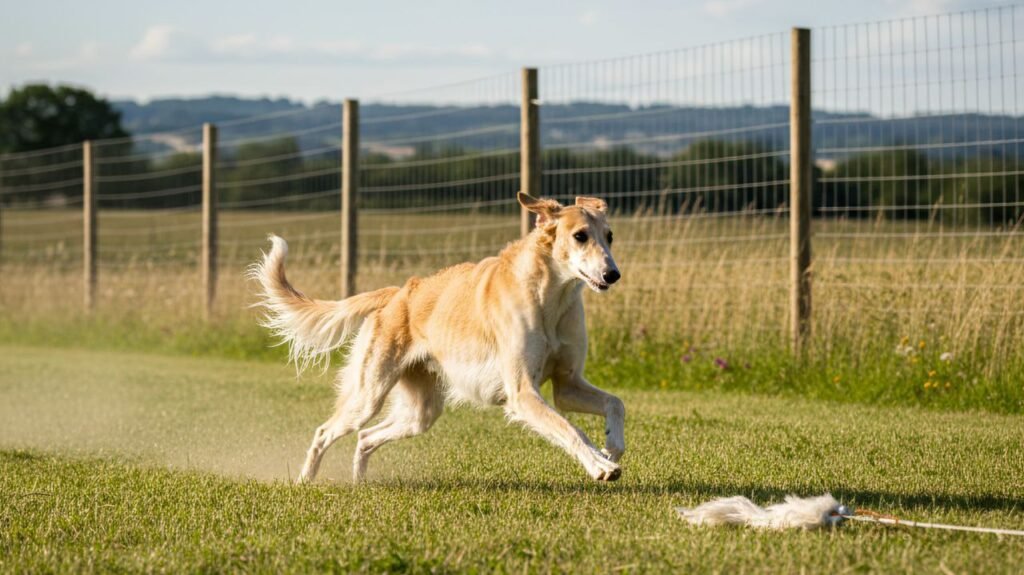
Salukis are athletes by nature. While calm indoors, they require daily vigorous exercise:
- Running: They love to run and should have access to a secure, enclosed area.
- Walking: A minimum of two long walks daily is recommended.
- Agility and Lure Coursing: Salukis excel in canine sports like lure coursing, which simulates hunting.
Note: Because of their sighthound instincts, they should never be let off-leash in unsecured areas — they may bolt after something and not respond to recall.
Health and Care
Common Health Issues:
They are generally a healthy breed, but they can be prone to:
- Cardiac issues (e.g., cardiomyopathy)
- Anesthesia sensitivity (due to low body fat)
- Autoimmune conditions
- Eye issues (like progressive retinal atrophy)
- Hip dysplasia (less common than in other breeds)

Grooming:
- Low-maintenance coat, requiring weekly brushing.
- Feathered Salukis may need more frequent grooming.
- Ears should be cleaned regularly.
- Teeth and nails require regular maintenance.
Living With a Saluki
They can adapt to both rural and urban environments if their exercise needs are met. They prefer quiet homes, and while they are good with children, they do better with older, respectful kids due to their sensitive nature.

Ideal Home:
- Active owner or family
- Fenced yard
- No small pets (unless raised together)
- Calm household atmosphere
They also get along well with other sighthounds, especially other Salukis, and often enjoy having a companion of their own kind.
Saluki in Culture and Art
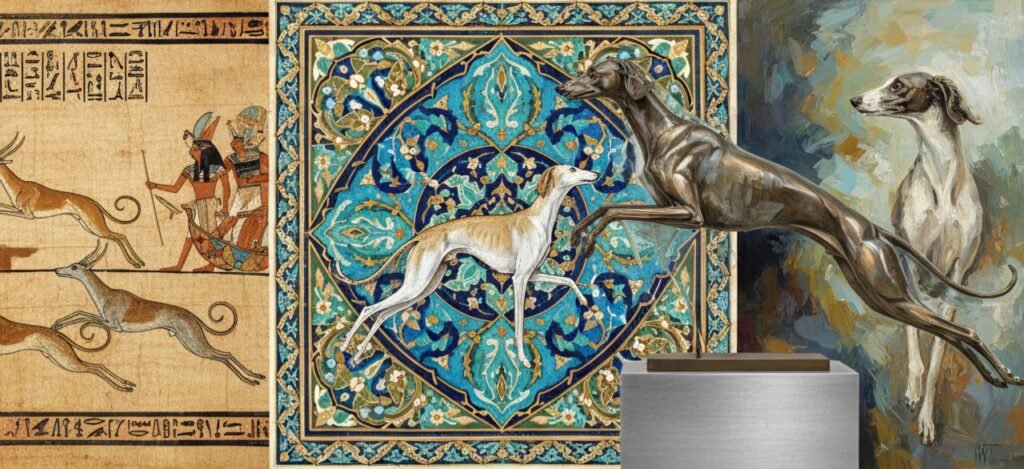
The Saluki has appeared in:
- Ancient Egyptian carvings and paintings
- Islamic art and literature
- Middle Eastern folklore as a symbol of nobility and purity
The breed was introduced to Europe in the 19th century and recognized by the American Kennel Club (AKC) in 1927.
Fun Facts
- The Saluki can run up to 42 mph (68 km/h), making it one of the fastest dog breeds.
- Salukis were once given as gifts to kings and royalty.
- The breed has been called the “greyhound of the desert.”
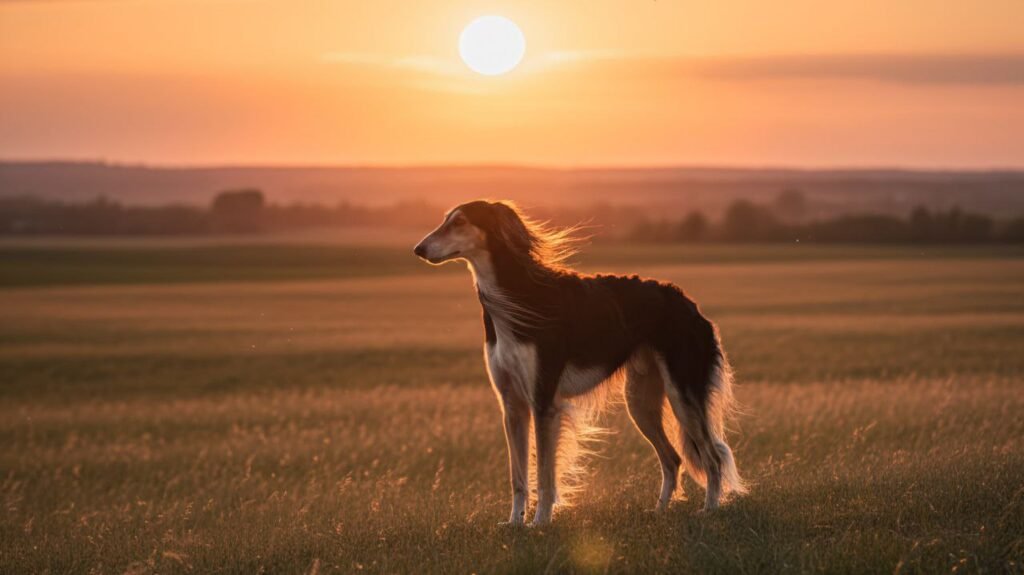
The Saluki is not just a dog breed; it’s a living relic of ancient history, offering grace, loyalty, and quiet companionship to those who understand its unique temperament. For the right owner, the Saluki is a regal and rewarding companion — combining the mystique of the past with the heart of a true friend.

